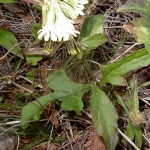| Common Name: |
Lion's Foot |
| Other Names: |
Lady's Mantle |
| Botanical Name: |
Alchemilla xanthochlora syn. A. vulgaris |
| Genus: |
Alchemilla |
| Family: |
Rosaceae |
| Cultivation: |
Moist, well-drained soil in sun or semi-shade. Alchemilla xanthochlora dislikes lime. |
| Propagation: |
By seed sown in early spring; by division in autumn or spring. Most alchemillas hybridize and self-seed readily. |
| Harvest: |
Whole plants (A. xanthochlora) are cur as the flowers begin to open. Leaves (A.alpina) are cut after flowering, when the foliage is quite dry. All parts are dried for infusions and liquid extracts. |
| Native Location: |
NW to C Europe and Greece |
| Height: |
50cm (20in) |
| Width: |
50cm (20in) |
| Hardiness: |
Z4-7 |
| Parts Used: |
Whole plant |
| Properties: |
A bitter, astringent herb that controls bleeding and discharges. |
| Medicinal Uses: |
Internally for excessive or irregular menstruation, menopausal problems, and diarrhea. Externally for vaginal discharge and vulval itching. |
| Culinary Uses: |
Leaves are an ingredient of Easter ledger pudding (see also Persicaria bistorta, knotweed) in N. England. |
| Bibliography: |
Encyclopedia of Herbs by Deni Brown. Copyright © 1995, 2001 Dorling Kindersley Limited. pg 110
|

